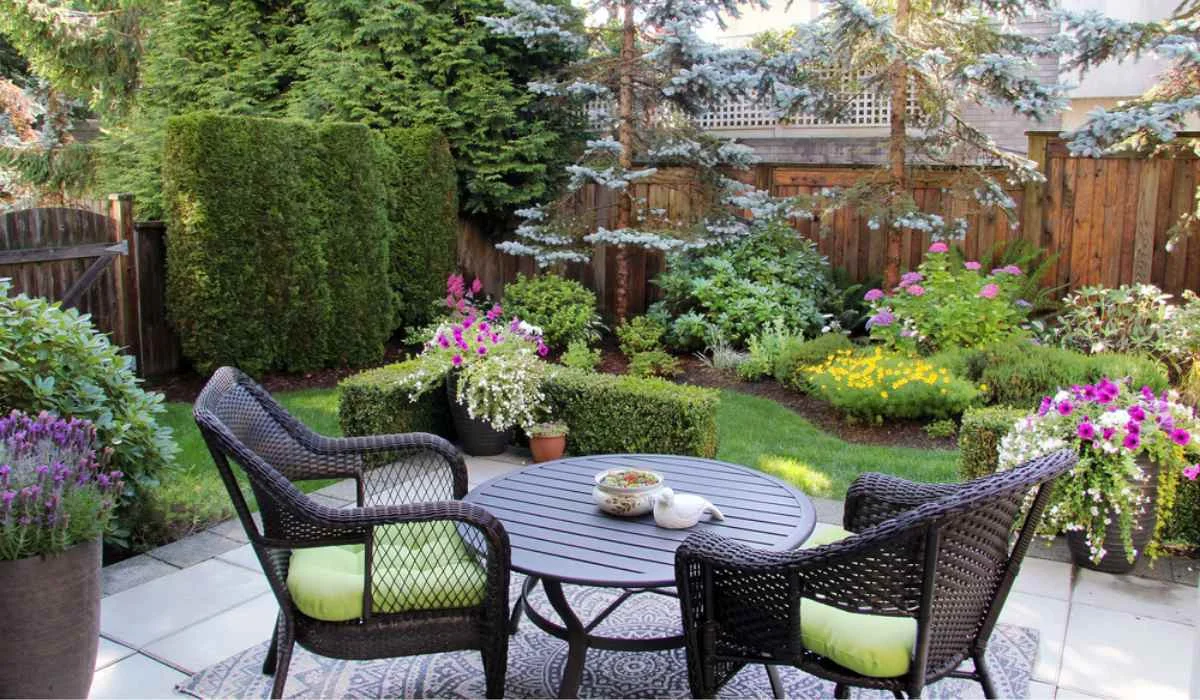Garden Landscaping for Small Spaces can turn even the tiniest outdoor nook into an inviting haven. Maximize vertical space, add focal points and hardscaping, select colors to enhance your scheme, and accessorize with outdoor decor to bring life to your landscape garden.
If your space is too limited for grass and flowers to flourish, paving a path and seating can still add appeal. Add curves for an organic appearance.
Keeping Plants in Pots
Designing a small garden requires keeping it simple; using unnecessary furniture and accessories only adds clutter and detracts from its beauty. One way to overcome this problem is through perennial flowers and long-lived shrubs that don’t need replanting each year; plant breeders have long recognized this challenge and have created compact plants like Baby Kim Lilac (Syringa hybrid ‘SMNSDTP’) for small space gardening that pack all of the beauty of traditional lilacs into just three feet, Skyrocket Juniper (Juniperus scopulorum), and Slender Silhouette Sweet Gum (Liquidambar styraciflua), creating beautiful space-saving trees that boast vibrant fall foliage backdrop trees to enhance small space gardening efforts.
If you decide to utilize containers, think creatively when choosing their placement. They can serve as focal points with strategically-placed statues or boulders and help add height and interest to a small landscape. Or create custom structures like arbors and trellises to house climbing plants or green walls.
Creating Focal Points
People typically associate focal points with large fountains or pergolas; however, even smaller garden spaces can benefit from them. A focal point can be anything that draws the eye away from its progression through a garden space and interrupts it; plants, containers and architectural features all serve to provide focal points that draw visitors’ attention away from other parts of it.
Plants can create stunning focal points in any garden by combining color, texture, and form into stunning displays of beauty. Plants also help guide visitors’ eye journey through your landscape all season long; from perennial blooms to Japanese maple leaves turning red each spring!
Statues and benches can make great focal points in a garden when placed carefully. Just be mindful that their scale should fit within your landscape – a six-foot statue would look out of place in a cottage garden setting!
Getting Rid of the Lawn
Flowers, plants, and trees in gardens of any size add beauty, provide tranquility, and improve air quality. However, maintaining them requires too much of our time and energy; perhaps getting rid of your lawn would make the space more useful and enjoyable?
An alternative to having a lush, green lawn would be installing a flagstone patio and hardscaping elements such as benches and low tables in your yard, providing seating areas without fear of visitors or pets trampling your plantings. This way you can use your entire backyard as an inviting lounge space without fear that they’ll be trodden upon by visitors or pets.
If you prefer a colorful yard, consider creating a flower garden that’s easy to care for and brings an annual burst of blooming color each spring or fall. Or opt for shrubs with different hues like evergreen varieties such as Skyrocket juniper or Slender Silhouette sweet gum that can also serve as living fences or backdrops – and keep in mind using plants of differing heights to add visual interest in the landscape.
Keeping Plants Low to the Ground
When creating a small garden landscape with a focal point, it’s crucial that it doesn’t dwarf its surrounding elements. A fountain, for instance, can help make space appear bigger without overwhelming it with size or aesthetic. Instead, consider surrounding it with low-growing plants or other elements which don’t overshadow it as part of its landscape design.
Layering plants is another key step towards making a garden feel larger. By placing tall bushes between rows of flowers or colorful foliage plants, creating depth will become apparent. Furthermore, adding trees helps create more symmetrical designs within your space.
Add water features such as ponds, gurglers or small waterfalls for a soothing sound to add a relaxing atmosphere in your garden.





